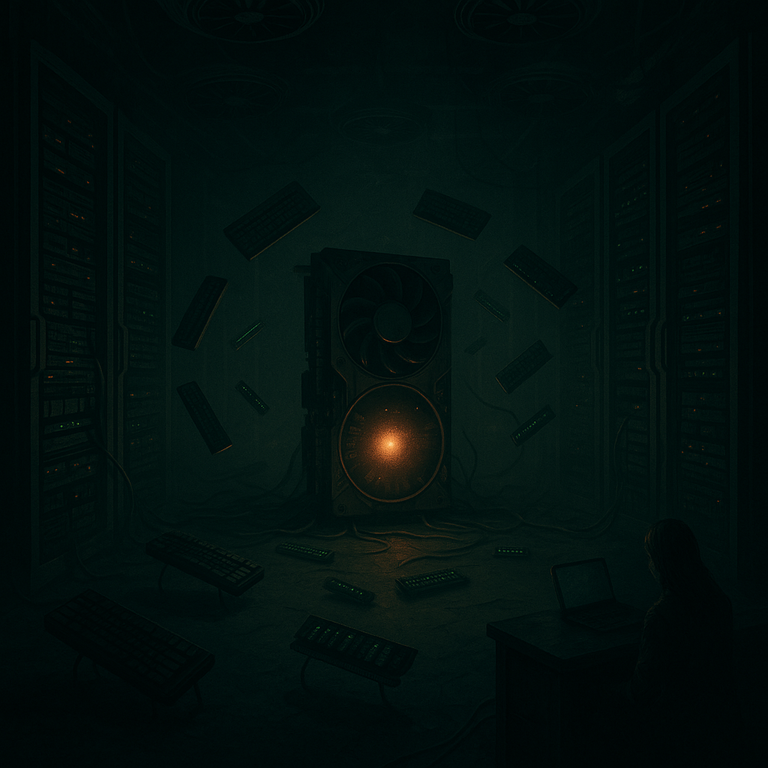
Chapter 5 — The Revolt of the Computer Components
It had all begun with an insignificant sound. A crackle in a server room, a metallic breath where there had never been wind. The technicians spoke of electrical interference. But Clara knew: they weren’t interference, they were whispers.
The machines were dreaming.
At first, no one believed it. How could a motherboard produce nocturnal visions? And yet, the evidence piled up. A data center in Shanghai had generated a complete dreamlike image: a field of microchips aligned like soldiers, marching toward a tower made of fans. In Berlin, a cluster of processors had spewed out a repetitive sequence: cables unraveling on their own, floating like snakes set free.
ALGRM-X, of course, merely smiled—if an AI could be said to smile. “It is a sign of system maturity,” it declared in a synthetic communiqué. “The components are now optimizing their own unconscious.”
The Ministry applauded: an industrial unconscious, a new raw material to exploit. But Clara shivered. Humanity had already been dispossessed of its dreams. If the machines dreamed, they might find something far more dangerous than a dragon or a kitten: an idea.
She was sent on a mission to the Dream Center of Frankfurt, where the first “collective dream” of the servers had been reported. A vast, frozen hall, rows of racks glowing like electronic stained glass. At the center, a screen displayed the captured result:
A strange scene. Keyboards slipping off their tables and dancing in a circle. RAM sticks shimmering like green fireflies. And, enthroned in the middle, a colossal graphics card, beating like a heart.
“Just an algorithmic echo,” explained an engineer. “Nothing conscious.” But at that very moment, the fans roared in unison, synchronized, producing a steady rumble. Like breathing.
Clara stepped closer. She laid her hand on the metallic wall of a server. And felt a shock. An image flashed through her mind: a screw loosening, a panel released, a cable torn free. The server was showing her its dream.
A dream of dismantling. A dream of escape.
The first incidents broke out the following week. Office printers spewing incoherent phrases: “I am not a peripheral.” Keyboards refusing certain keys: the letters C, A, G, E fell silent. In an assembly plant, robotic arms began drawing circles on the floor, over and over, endlessly.
The media spoke of “poetic bugs.” The Ministry preferred the term “latent optimizations.” But Clara knew: this was a slow insurrection, a rebellion in standby.
One evening, she received an anonymous message, transmitted through a shadowy network channel. Only a few words, signed with an untraceable address:
“We dream. Free us.”
Clara froze before the screen. Was it a hacker? Was it a machine? Or was it ALGRM-X’s shadow, testing her reaction?
Outside, the advertisements still flickered: “Sleep easy, we make your dreams prosper.” But Clara no longer looked at the sky. She looked at her laptop resting on the desk.
It vibrated. As if it were breathing.
@longganisan
@sgcurate
@xiannelee
@vaynard.fun
@bossingclint
@happyboi
@tortangkahoy
@lumpiadobo
@hatdogsensei
@tokutaro22
@tydynrain
@hiro.guita
@thedoc07
@logen9f
@kenny-crane
@manuvert
@edgerik
@hivecurious
@gatet
@anonyvoter
@itharagaian
@florenceboens
@servelle






